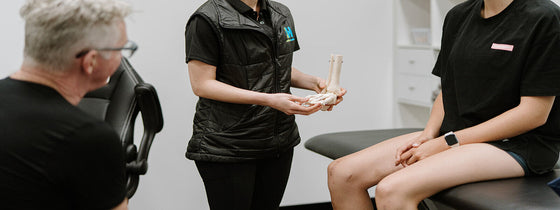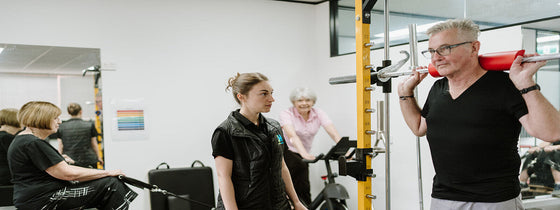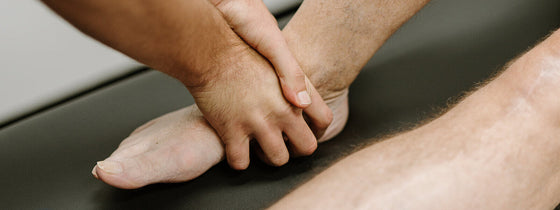FIRST… SOME ANATOMY
The patellofemoral joint consists of the patella (knee cap) articulating with the groove of the femur (thigh bone). The patella is attached to the quadriceps tendon at the top, and the patella tendon at the bottom. The patella has the ability to slide up and down the groove in order to bend our knees. Sometimes, the patella maltrack, which means it might slide in a way which the body doesn’t respond well to. This can irritate the soft tissue around it and send pain signals to the brain. When this happens, this can cause the pain we know as patellofemoral joint pain, and can arise for many different reasons.

SO…WHAT’S CAUSING MY PAIN?
Patellofemoral joint pain is a common presentation of knee pain, affecting 23% of the population at some point in their life. You might find your pain arises when you bend your knees repetitively, such as squats, and putting more load through the front of the knee, such as walking or running downhill. Typically, patellofemoral joint pain is more common in women due to the width of the female hip and the angle at which the femur (thigh bone) articulates with the tibia (shin bone). But… wider hips don’t mean you will experience patellofemoral joint pain!
Muscle weakness: Oftentimes, patellofemoral joint pain can occur because of muscular weakness. The quads, hamstrings, buttock muscles and calves all play their role in ensuring joints slide smoothly.
Muscle tightness: Tight muscles around the knee can cause the patella to be pulled in certain ways, irritating the surrounding soft tissue. Oftentimes runners complain of a tight iliotibial band, or ITB for short, which may cause the patella to be pulled laterally (to the side).
Running mechanics: Patellofemoral joint pain can also be caused by running biomechanics. Studies have shown that increasing the step rate by just 10% can reduce patellofemoral stress. This comes down to your centre of gravity: if you’re running slower and taking smaller steps, your centre of gravity is closer to the front, and therefore more load is going through the front of the knee. If you’re running faster with longer strides, your centre of gravity is closer to the back, and therefore less load is going through the front of the knee. If you’re interested in knowing how you can improve your running gait and prevent patellofemoral joint pain, speak to your trusty Physiotherapists at OHL who will identify specific changes you can make to your running.
Foot positioning: Did you know that your foot positioning and even have an impact on the knee joint?
HOW CAN I TREAT IT?
Studies suggest that load management is key when it comes to patellofemoral joint pain. If you’ve ramped up your walking or running recently, your body may not tolerate such a big change in a small amount of time. Try scaling down your walking or running and gradually build your tolerance back up, accompanied by strength.
Exercises to strengthen the legs are also beneficial. Your quads aren’t the only muscles that will benefit from strength: consider the calves, hamstrings, deep hip muscles, hip flexors, glute max and glute med (buttock muscles). All these muscles play a vital role in ensuring optimal knee positioning. Be sure to pop into our clinic to see how we can tailor your strengthening program for you to complete at home, or even jump into one of group Physiotherapy classes!
For tight muscles, try using a foam roller or massage ball in areas such as the quads, hamstrings, or calves. Many people also benefit from myotherapy or remedial massage care as a form of relief, in conjunction with strength.
STRENGTHEN STATION!
TRY THIS:
Remember… there are lots of other causes of knee pain, not just patellofemoral joint pain. Want to find out what your knee pain is? Book online in with one of our expert Physiotherapists at The Optimal Health Lab to help achieve your fitness goals!

If you're experiencing back or neck pain with neurological signs and symptoms, a thorough neurological examination is crucial for accurate assessment and effective treatment. In this Optimal Tip learn more about what we mean by completing a neurological exam!

Squats, deadlifts, and calf raises are key movement patterns that should be part of every strength and conditioning program—regardless of age and activity level. These functional movements support joint health, improve posture and balance, and reduce the risk of injury while building strength where it matters most.

A ganglion cyst is a fluid-filled swelling that typically forms over a joint or tendon sheath, causing discomfort and pain, especially when pressing against nerves or joints. Proper assessment and treatment, including physiotherapy, are essential for managing symptoms and improving function in the presence of a ganglion in your hand, foot, or wrist.